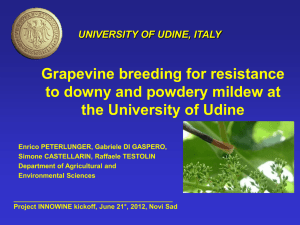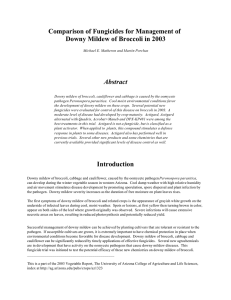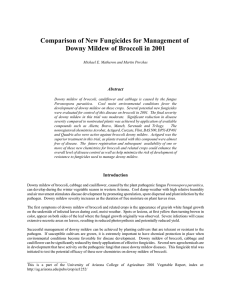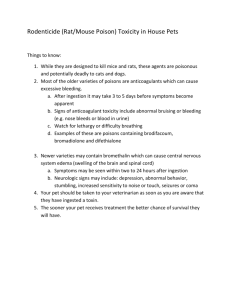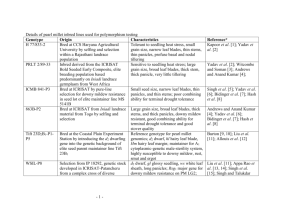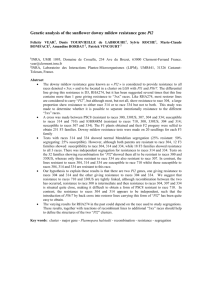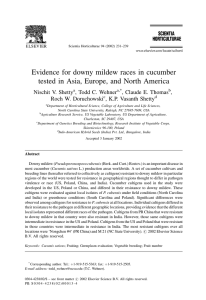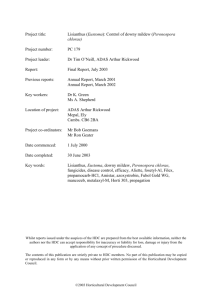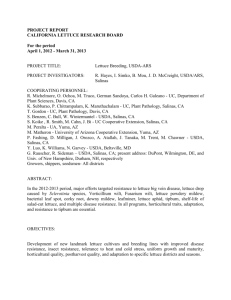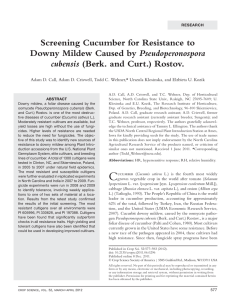International Bremia Evaluation Board Workshop 2014
advertisement
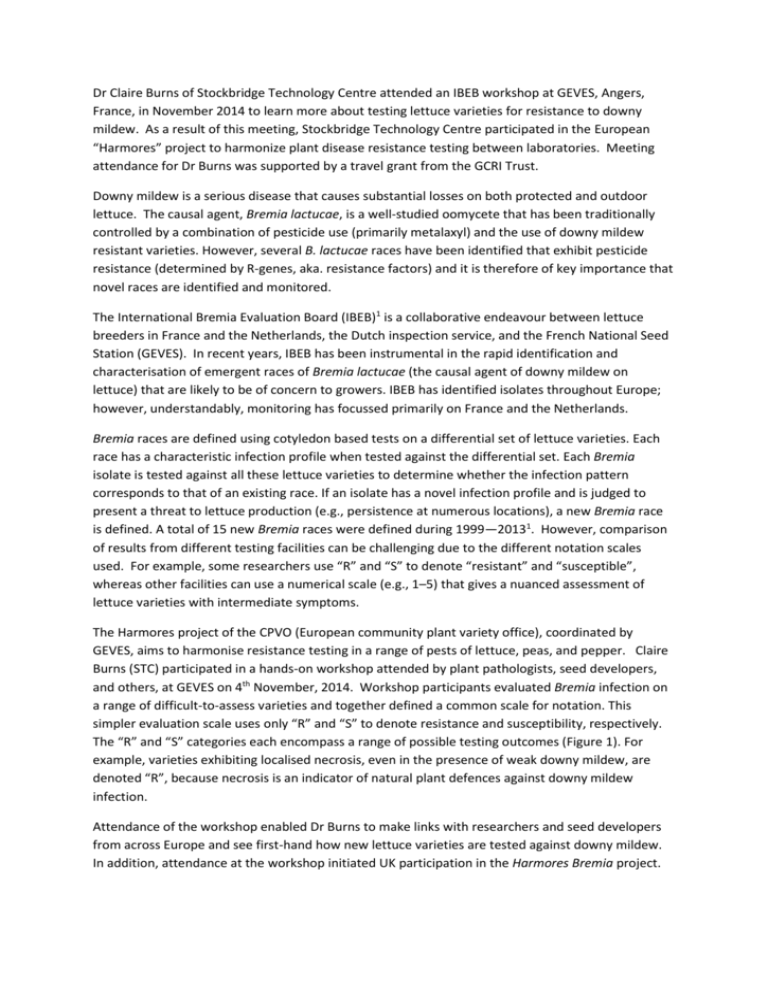
Dr Claire Burns of Stockbridge Technology Centre attended an IBEB workshop at GEVES, Angers, France, in November 2014 to learn more about testing lettuce varieties for resistance to downy mildew. As a result of this meeting, Stockbridge Technology Centre participated in the European “Harmores” project to harmonize plant disease resistance testing between laboratories. Meeting attendance for Dr Burns was supported by a travel grant from the GCRI Trust. Downy mildew is a serious disease that causes substantial losses on both protected and outdoor lettuce. The causal agent, Bremia lactucae, is a well-studied oomycete that has been traditionally controlled by a combination of pesticide use (primarily metalaxyl) and the use of downy mildew resistant varieties. However, several B. lactucae races have been identified that exhibit pesticide resistance (determined by R-genes, aka. resistance factors) and it is therefore of key importance that novel races are identified and monitored. The International Bremia Evaluation Board (IBEB)1 is a collaborative endeavour between lettuce breeders in France and the Netherlands, the Dutch inspection service, and the French National Seed Station (GEVES). In recent years, IBEB has been instrumental in the rapid identification and characterisation of emergent races of Bremia lactucae (the causal agent of downy mildew on lettuce) that are likely to be of concern to growers. IBEB has identified isolates throughout Europe; however, understandably, monitoring has focussed primarily on France and the Netherlands. Bremia races are defined using cotyledon based tests on a differential set of lettuce varieties. Each race has a characteristic infection profile when tested against the differential set. Each Bremia isolate is tested against all these lettuce varieties to determine whether the infection pattern corresponds to that of an existing race. If an isolate has a novel infection profile and is judged to present a threat to lettuce production (e.g., persistence at numerous locations), a new Bremia race is defined. A total of 15 new Bremia races were defined during 1999—20131. However, comparison of results from different testing facilities can be challenging due to the different notation scales used. For example, some researchers use “R” and “S” to denote “resistant” and “susceptible”, whereas other facilities can use a numerical scale (e.g., 1–5) that gives a nuanced assessment of lettuce varieties with intermediate symptoms. The Harmores project of the CPVO (European community plant variety office), coordinated by GEVES, aims to harmonise resistance testing in a range of pests of lettuce, peas, and pepper. Claire Burns (STC) participated in a hands-on workshop attended by plant pathologists, seed developers, and others, at GEVES on 4th November, 2014. Workshop participants evaluated Bremia infection on a range of difficult-to-assess varieties and together defined a common scale for notation. This simpler evaluation scale uses only “R” and “S” to denote resistance and susceptibility, respectively. The “R” and “S” categories each encompass a range of possible testing outcomes (Figure 1). For example, varieties exhibiting localised necrosis, even in the presence of weak downy mildew, are denoted “R”, because necrosis is an indicator of natural plant defences against downy mildew infection. Attendance of the workshop enabled Dr Burns to make links with researchers and seed developers from across Europe and see first-hand how new lettuce varieties are tested against downy mildew. In addition, attendance at the workshop initiated UK participation in the Harmores Bremia project. The next stage of the Harmores Bremia project, in February 2015, was to evaluate downy mildew infection on a subset of lettuce varieties at the workshop participants’ home laboratories. The aim of this was to determine whether the new notation scale was robust when used by different testers in different locations. STC participated in this project as a direct result of workshop attendance. Two Bremia lactucae races (BL:24 and BL:26) were tested against six coded lettuce varieties and known resistant and susceptible varieties (Figure 2). At STC, two of the coded varieties were resistant against BL:24 and one variety was resistant against BL:26. Working with Bremia isolates is not straightforward as the pathogen cannot be cultured using artificial media, and strains must therefore be maintained in plants. Participation in the Harmores project allowed researchers at STC to gain valuable experience in maintenance of the pathogen and in resistance testing. The data from the participating laboratories will be compiled at GEVES later in the year. The GCRI Trust promotes scientific research and education on the cultivation of glasshouse and protected crops. The GCRI Trust provides small travel grants to researchers involved in British horticulture and publishes technical reports of new and interesting items of potential value to UK horticulture. The GCRI Trust sponsors a high prestige biennial seminar ‘The Bewley Lecture’ on international matters relating to future trends in horticulture. Figure 1: Lettuce seedlings displaying varying levels of resistance to downy mildew. Clockwise, from top left: S, susceptible (with abundant sporulation); R, resistant (with necrosis and a small amount of sporulation); R, resistant (no necrosis or sporulation); R, resistant (necrosis without sporulation).
